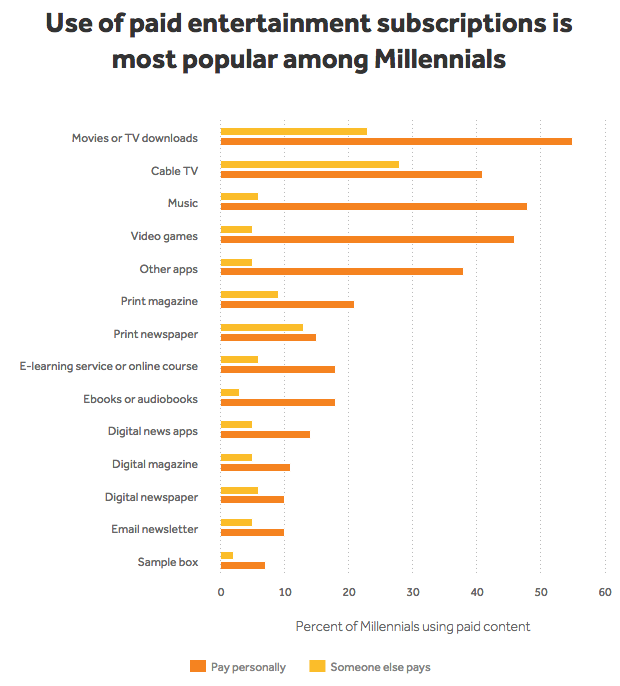We can’t seem to stop talking about millennials, that elusive age of young people — roughly mid-teens to early 30s — whose numbers have surpassed the baby boomer generation. Recent research suggests, unsurprisingly, that millennials are not a “monolithic group” when it comes to news consumption habits, but in fact fall into several distinct categories.
It turns out that a significant percentage of this diverse group says it’s willing to pay for content, according to research released today by the Media Insight Project. But news is a harder sell than other forms of entertainment, whether digital or not.

The study found that 93 percent of 18- to 34-year-olds surveyed regularly use some type of paid content (whether they’re paying for it personally or someone else is) and 87 percent have personally paid for such services (but that includes things like Netflix, Candy Crush, or iTunes downloads). Forty percent say they have personally paid for some sort of news product or service (though that can also include anything from The New York Times to a gaming magazine. Older millennials were understandably more likely to pay for news than their younger peers. Some other notable findings — with the caveat that all of these data points are self-reported, and that people sometimes like to say they do civic-minded things like pay for news when they don’t:
— More millennials say they’ve paid for print magazines (21 percent) and newspapers (15 percent) than digital magazines (11 percent) and online newspaper content (10 percent).
— No significant socioeconomic differences between those who pay for news and those who do not pay for these services.
— Those paying for news are more likely to follow sports (56 percent vs. 44 percent) and current events such as national politics (51 percent vs. 38 percent) than those who do not pay.
— Those paying for news also tended to engage with the news more on free platforms like Twitter and Facebook.
This is not to say that getting this younger group to pay for news is easy. As one 19-year-old interviewed in the course of the research said: “I really wouldn’t pay for any type of news because as a citizen it’s my right to know the news.”
The data for this study was drawn from a nationally representative survey of 1,045 adults between the ages of 18 and 34, conducted between January 5 and February 2. The Media Insight Project is an initiative of the American Press Institute and The Associated Press-NORC Center for Public Affairs Research, and you can read the full report with more detailed findings here.